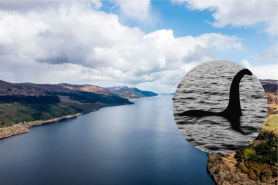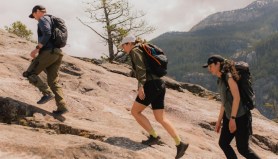

While California skiers are rejoicing over the state’s record-breaking snowfall this year, many wildland firefighters are starting to get nervous. Winter precipitation means spring plant growth—and to a wildfire, plants are nothing more than fuel.
Videos by Outdoors
Of course, California’s record-breaking precipitation does have some benefits. It’s helped alleviate the state’s longstanding drought. Plentiful rainfall also encourages wildflower seeds to sprout, which could lead to stunning super blooms this spring. The problems start when all those flowers and grasses dry out in late summer. Some land managers worry that they could feed massive wildfires.

Fires not only destroy gorgeous natural landscapes and wildlife habitat — they threaten human health, as well. Wildfire smoke exacerbates conditions like asthma and may be linked to premature labor in pregnant women. Chemicals found in smoke have also been shown to damage the ozone layer, which is what protects the earth from dangerous UV radiation. (The planet’s ozone layer is slowly healing, but a banner U.S. fire year could stall its progress, putting more people at risk of skin cancer and other dangerous conditions.)
Land managers might have less to worry about if California had had a lot of big fires in 2022—or if it had been in the habit of letting fires blaze naturally over the past century or so. Usually, wildfires hit forests in cycles, getting bigger and more intense when fuels like fallen trees have time to build up on the landscape. Once a fire sweeps through an area, the land is less likely to burn for the next few years.

Thanks to decades of fire suppression, however, California’s landscapes are now covered with tons of built-up fuel. If this summer is as botanically prolific as experts expect, it could be the final straw—and turn the state into a tinder box just waiting to light.
Fortunately, there are some plans in place to help tackle the fuel buildup. Earlier this year, the Biden Administration rolled out a massive new wildfire crisis plan, which aims to strategically thin forests and perform controlled burns in vulnerable areas. If land managers are able to set this plan in motion this spring, it could help forestall the worst of the coming fires.
In the meantime, the best we can do as recreationists is tread carefully. Always check for local fire bans before starting a campfire. Clear dead leaves and debris away from your cookstove before hitting the ignition. As for smokers? If the forest around you looks a little dry, maybe reconsider before lighting up.









